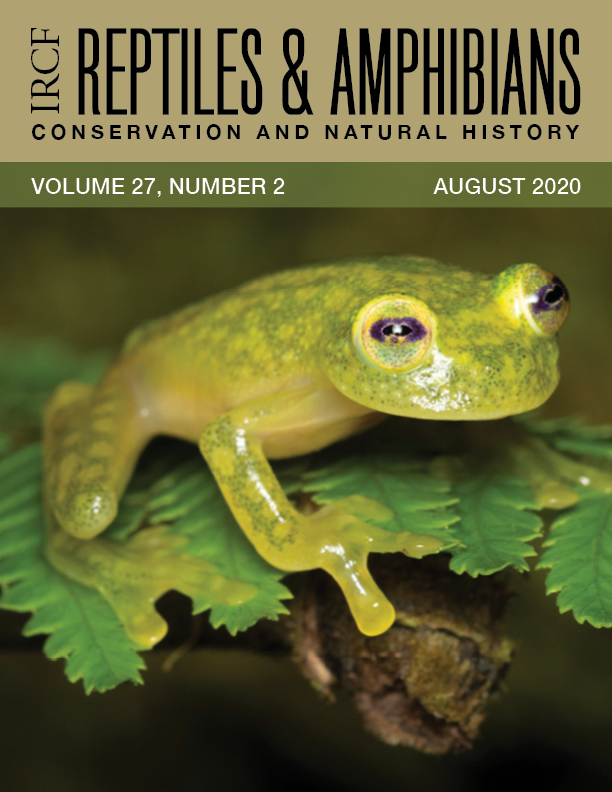Trophic Ecology of the Cuban Boa, Chilabothrus angulifer (Boidae)
DOI:
https://doi.org/10.17161/randa.v27i2.14176Abstract
The Cuban Boa (Chilabothrus angulifer) is a top terrestrial predator in Cuba. References to prey species consumed by this boa date to when the first Europeans arrived in the region more than 500 years ago. However, long-term studies on its trophic ecology do not exist. The scarce and scattered records on its feeding habits indicate that this boa preys on a variety of native and domestic animals. Based on dietary information collected in the field and from the literature, we characterized the diet of this snake and tested four different hypotheses: (1) The Cuban Boa is a generalist predator; (2) the diets of boas in natural and anthropogenic habitats differ; (3) an ontogenetic shift in diet occurs; and (4) foraging strategies used in natural and anthropogenic habitats differ. We identified 49 prey species from 351 prey items obtained from 218 snakes, including 71 items (31 snakes) from the literature. Mammals represented 55% of total prey items consumed, followed by birds (41%) and ectotherms (4%). Chilabothrus angulifer exhibited a narrow niche breadth. However, rather than a trophic specialist, we consider this boa an opportunistic generalist predator, capable of adjusting its diet and foraging behavior according to prey availability and abundance. The diet of Ch. angulifer changed dramatically from mostly native mammals and birds in natural habitats to mostly livestock, pets, and human commensals in human-altered habitats. Also, mammals were consumed more frequently in natural habitats, whereas birds dominated the diet of boas associated with anthropogenic habitats. Few ectotherms were consumed in either type of habitat. We observed an ontogenetic shift in diet, but this primarily reflected a trend of consuming larger prey rather than a shift from ectotherms to endotherms as reported for some other boids. In natural habitats, Ch. angulifer used both ambush and active-foraging modes by day and night, whereas in anthropogenic situations, most boas used an active-foraging strategy at night. The frequent consumption of domestic animals by Cuban Boas might be the principal reason for the historical human-wildlife conflict involving this species in rural areas of Cuba.
Downloads
Published
Issue
Section
License
Copyright (c) 2020 Tomás M. Rodríguez-Cabrera, Ernesto Morell Savall, Sheila Rodríguez-Machado, Javier Torres

This work is licensed under a Creative Commons Attribution-NonCommercial 4.0 International License.
Copyright is held by the authors. Articles in R&A are made available under a Creative Commons Attribution-NonCommercial 4.0 International license.

